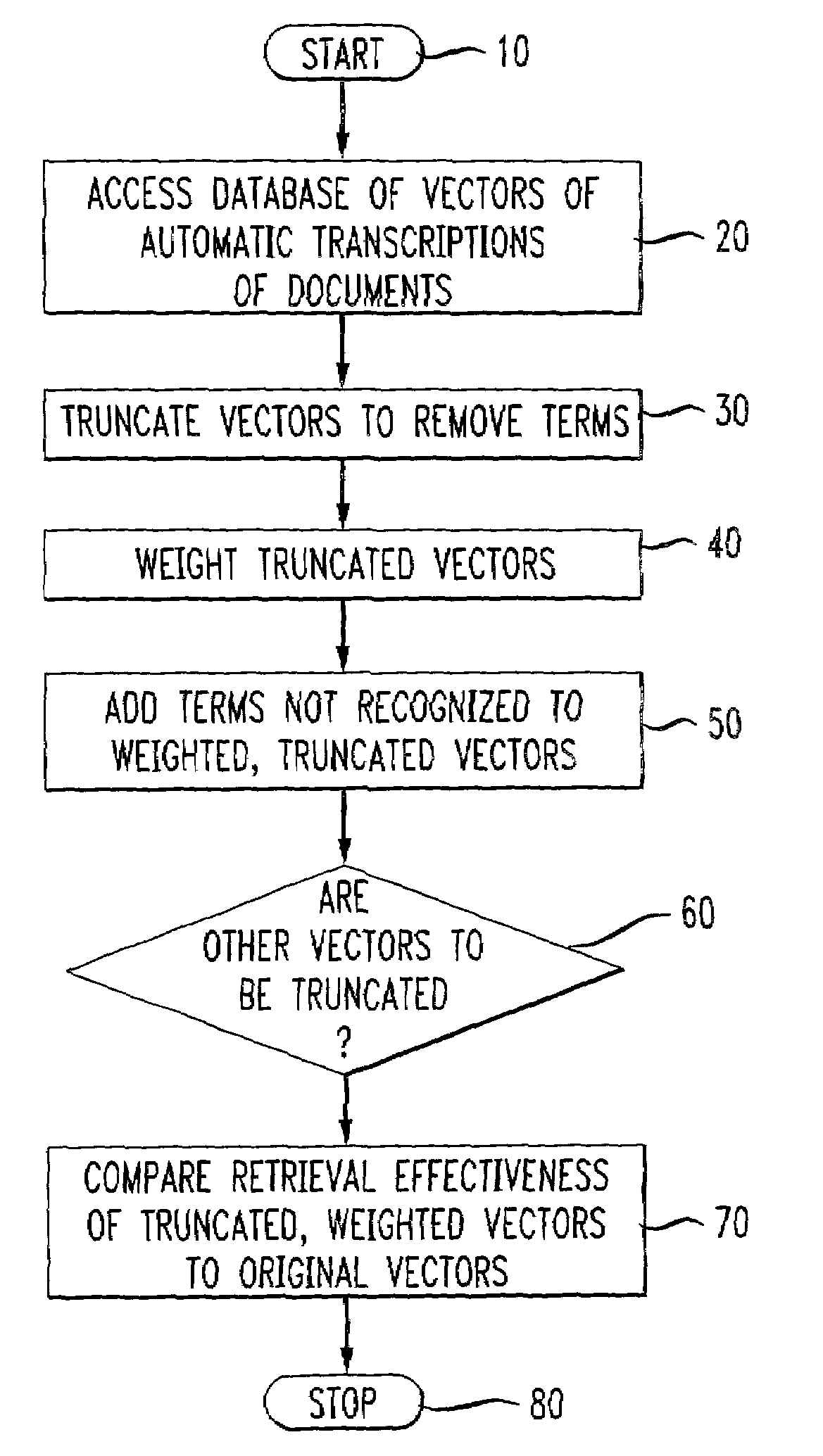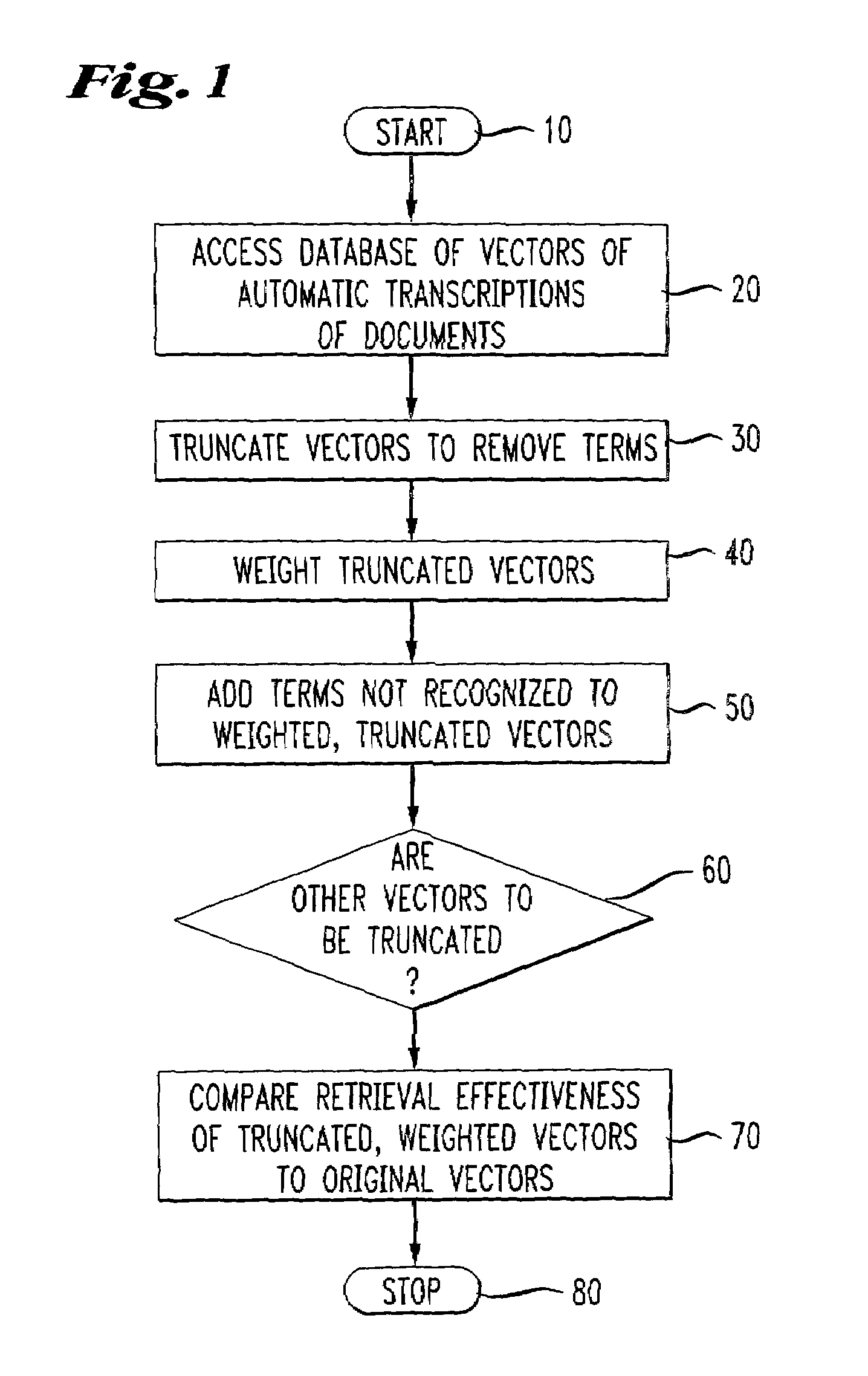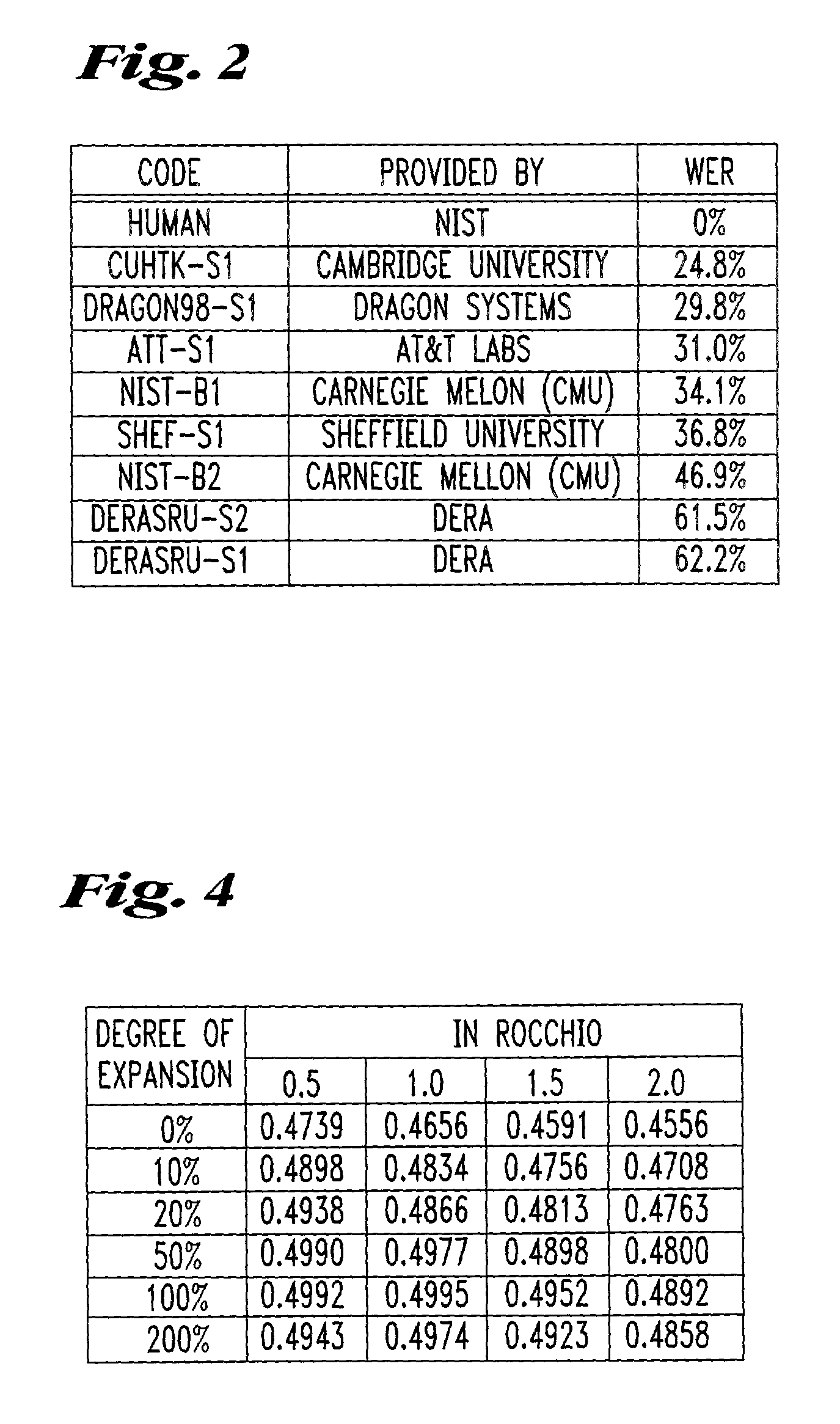Document expansion in speech retrieval
a document expansion and speech technology, applied in the field of document expansion, can solve the problems of not being able to get good automatic transcriptions, unable to solve new problems in information retrieval, and unable to achieve good information retrieval, so as to improve speech retrieval effectiveness, improve index representation, and reduce the effect of loss
- Summary
- Abstract
- Description
- Claims
- Application Information
AI Technical Summary
Benefits of technology
Problems solved by technology
Method used
Image
Examples
Embodiment Construction
[0028]Referring now to FIG. 1, a flow chart of a preferred method for implementing the invention is depicted. It will be appreciated by those skilled in the art that the inventive methods may be programmed in software and run on an appropriate general purpose, digital computer. The software environment is any operating system, for example UNIX or WINDOWS, and the software programming language may be any of a number of languages such as C++, VISUALBASIC, JAVA, HTML or any other object oriented language known to those of ordinary skill. Any appropriate computer may run the software, for example, a COMPAQ PROLIANT server, or a server available from Sun Microsystems.
[0029]The method starts at step 10, and at step 20 it is preferable to access a database of vectors of automatic transcriptions of documents. At step 30, the vectors are truncated to remove terms from the documents which are not recognized by a recognizer, for example an individual posing a query to the system to retrieve do...
PUM
 Login to View More
Login to View More Abstract
Description
Claims
Application Information
 Login to View More
Login to View More - R&D
- Intellectual Property
- Life Sciences
- Materials
- Tech Scout
- Unparalleled Data Quality
- Higher Quality Content
- 60% Fewer Hallucinations
Browse by: Latest US Patents, China's latest patents, Technical Efficacy Thesaurus, Application Domain, Technology Topic, Popular Technical Reports.
© 2025 PatSnap. All rights reserved.Legal|Privacy policy|Modern Slavery Act Transparency Statement|Sitemap|About US| Contact US: help@patsnap.com



